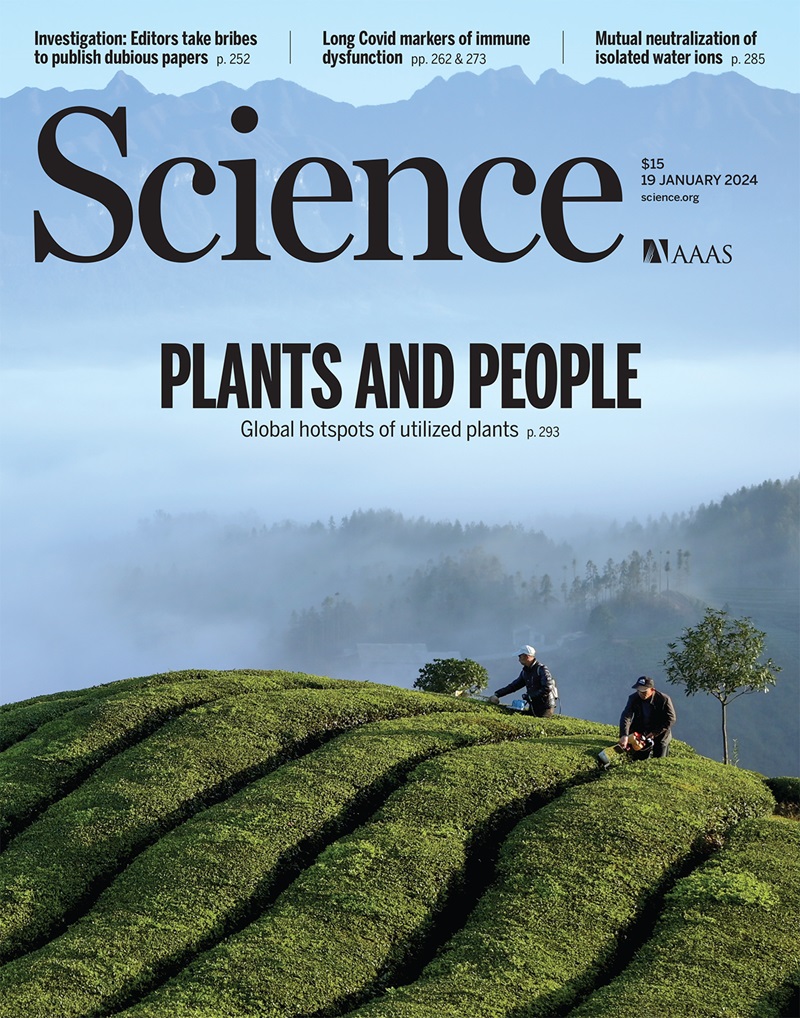转录因子SP5和SP8驱动哺乳动物胚胎的初级纤毛形成
IF 45.8
1区 综合性期刊
Q1 MULTIDISCIPLINARY SCIENCES
引用次数: 0
摘要
虽然已知特定的转录因子(TFs)调节细胞命运的决定,但它们能刺激特定细胞器形成的程度尚不清楚。我们使用多组学比较纤毛和非纤毛胚胎细胞的转录组来鉴定纤毛细胞中上调的tf。我们还在小鼠胚胎和干细胞中使用条件遗传学方法,发现TFs SP5和SP8调节纤毛的形成和基因表达。在缺乏Sp5和Sp8的胚胎中,初级纤毛和活动纤毛比正常纤毛短,并且在不同细胞类型中数量减少,导致倒位和脑积水。此外,SP8的表达足以在未纤毛细胞中诱导原代纤毛。这项工作将有助于利用干细胞模型研究纤毛组装,并促进对人类纤毛病的进一步了解。本文章由计算机程序翻译,如有差异,请以英文原文为准。

Transcription factors SP5 and SP8 drive primary cilia formation in mammalian embryos
Although specific transcription factors (TFs) are known to regulate cell fate decisions, the degree to which they can stimulate formation of specific cell organelles is less clear. We used a multiomics comparison of the transcriptomes of ciliated and unciliated embryonic cells to identify TFs up-regulated in ciliated cells. We also used conditional genetics in mouse embryos and stem cells and found that the TFs SP5 and SP8 regulate cilia formation and gene expression. In embryos lacking Sp5 and Sp8, primary and motile cilia were shorter than normal and reduced in number across cell types, contributing to situs inversus and hydrocephalus. Moreover, expression of SP8 was sufficient to induce primary cilia in unciliated cells. This work will facilitate the study of cilia assembly using stem cell models and promote further understanding of human ciliopathies.
求助全文
通过发布文献求助,成功后即可免费获取论文全文。
去求助
来源期刊

Science
综合性期刊-综合性期刊
CiteScore
61.10
自引率
0.90%
发文量
0
审稿时长
2.1 months
期刊介绍:
Science is a leading outlet for scientific news, commentary, and cutting-edge research. Through its print and online incarnations, Science reaches an estimated worldwide readership of more than one million. Science’s authorship is global too, and its articles consistently rank among the world's most cited research.
Science serves as a forum for discussion of important issues related to the advancement of science by publishing material on which a consensus has been reached as well as including the presentation of minority or conflicting points of view. Accordingly, all articles published in Science—including editorials, news and comment, and book reviews—are signed and reflect the individual views of the authors and not official points of view adopted by AAAS or the institutions with which the authors are affiliated.
Science seeks to publish those papers that are most influential in their fields or across fields and that will significantly advance scientific understanding. Selected papers should present novel and broadly important data, syntheses, or concepts. They should merit recognition by the wider scientific community and general public provided by publication in Science, beyond that provided by specialty journals. Science welcomes submissions from all fields of science and from any source. The editors are committed to the prompt evaluation and publication of submitted papers while upholding high standards that support reproducibility of published research. Science is published weekly; selected papers are published online ahead of print.
 求助内容:
求助内容: 应助结果提醒方式:
应助结果提醒方式:


